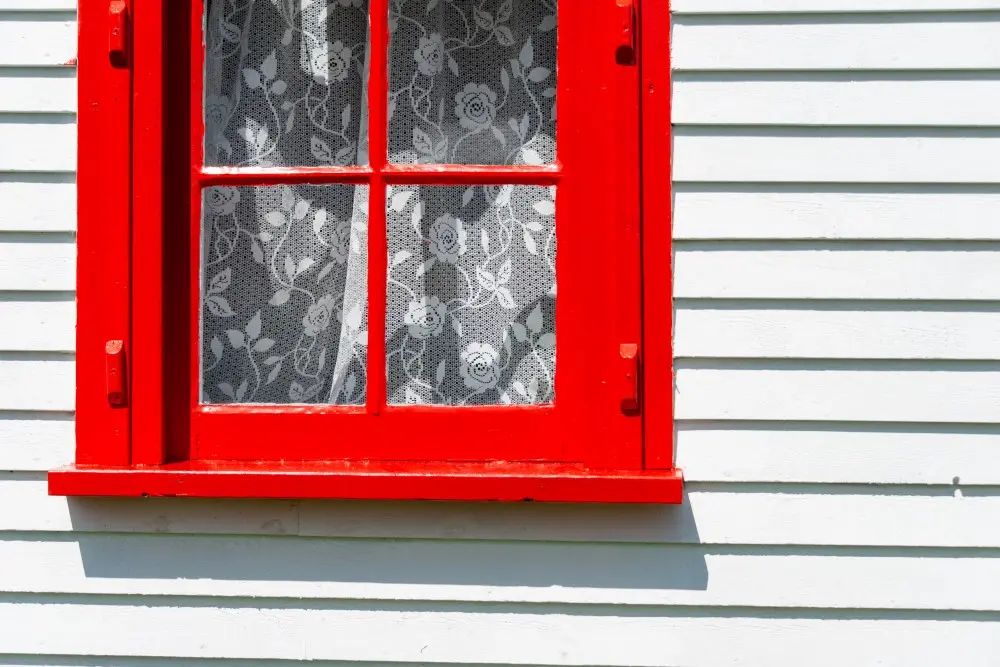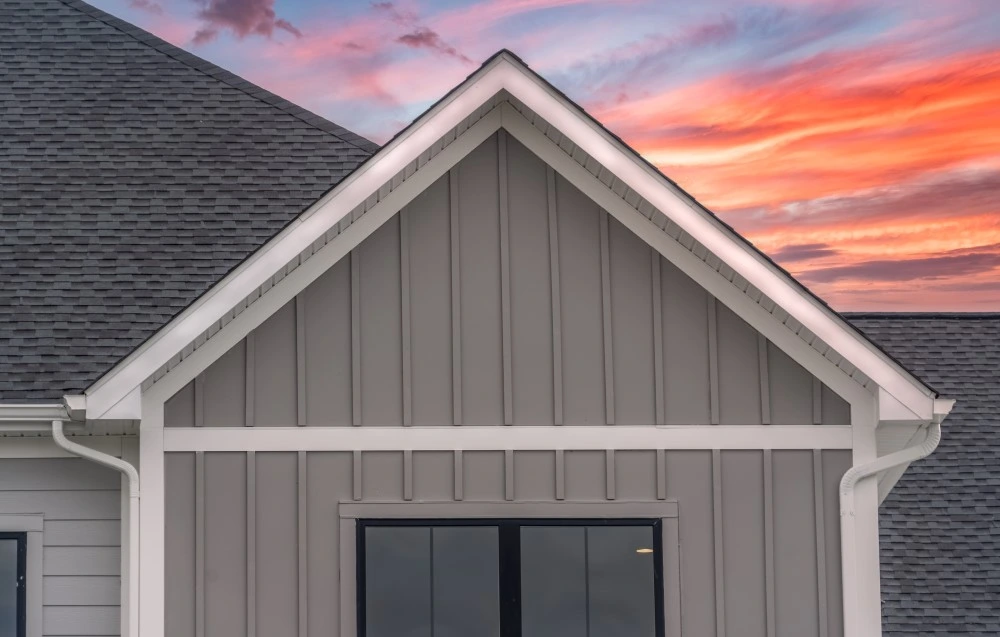What Is Lap Siding, and Why Do Chicago Siding Experts Choose It?
- 30min
- Updated:11/14/2025
- ByShaunak Ahuja
Your home's exterior is more than curb appeal — it's your first line of defense against Chicago's brutal winters and sweltering summers. Choosing the right siding means balancing style, durability, and long-term value in a climate that pushes every material to its limits.
As a trusted Chicagoland siding replacement company with decades of experience in the region's unique climate challenges, HX Home Solutions is proud to help homeowners make informed decisions about their exterior upgrades.
Leverage this guide to learn everything you need to know about lap siding, from traditional styles to modern materials, so you can choose the option that protects your investment and enhances your home.
What Is Lap Siding?
Lap siding is a horizontal board installation method where each course overlaps the one below it, creating a water-shedding profile that's been protecting homes for centuries. It’s a time-tested technique that combines function with versatility, making it one of the most popular siding choices in residential construction.
The overlapping installation technique creates a weather-resistant barrier that naturally directs water away from your home's exterior. Each plank is installed horizontally, with the narrow edge at the top and the wider bottom edge covering the top of the board below.
This design ensures that rainwater, snow melt, and ice flow downward without seeping behind the siding material. The term "lap siding" serves as an umbrella category that includes several distinct styles — from traditional clapboard to Dutch lap — and can be manufactured from various materials, including fiber cement, vinyl, and engineered wood.
Types of Lap Siding Styles
Lap siding comes in several architectural profiles that each offer a distinct look and shadow line that can dramatically change your home's character. Your choice depends on your home's architectural style and the aesthetic you want to achieve.
Traditional Clapboard Siding

Clapboard siding features classic tapered boards with the thicker butt edge at the bottom, creating a clean, timeless look. This style suits Colonial, Cape Cod, and traditional home designs, offering a subtle shadow line that adds depth without overwhelming the facade. The clapboard siding definition refers to the simple, beveled profile that's been used in American residential construction for hundreds of years, making it the most recognizable form of horizontal lap siding.
Clapboard Siding vs. Dutch Lap
Dutch lap siding features a decorative groove cut along the top edge of each board, creating a deeper, more pronounced shadow line than traditional clapboard. This style became popular for its ease of production and installation, and today it's favored on farmhouse, craftsman, and transitional homes where you want more visual interest.
While clapboard offers understated elegance with almost no shadow cast in certain lighting, Dutch lap provides a bolder dimension, making it a better choice if you want your siding to be a standout feature rather than a neutral backdrop. What is Dutch lap vinyl siding, exactly? It's the same decorative profile available in vinyl material, giving you the Dutch lap aesthetic with the benefit of low maintenance.
Shiplap Siding
Shiplap features boards with rabbeted edges that create a tight, nearly flush joint between courses. Originally used on wooden sailing ships and barns, where very tight tolerances were needed to keep water out, shiplap now appears on modern and rustic homes. This style offers a cleaner, more contemporary appearance than traditional clapboard, with planks that overlap but sit nearly flat against each other rather than creating deep shadow lines.
Beaded Lap Siding
Beaded lap siding features a decorative, rounded bead at the bottom edge of each board, adding architectural detail. This style works beautifully on Victorian, cottage, and homes where you want extra character and craftsmanship to show. The beaded profile creates a subtle shadow line while adding visual texture to enhance the home's curb appeal.
Each style creates a different visual rhythm on your home's exterior — from clapboard's timeless simplicity to Dutch lap's bold shadows. The right choice depends on your home's architecture and whether you prefer subtle elegance or statement-making detail.
Lap Siding Material Options

Don’t rush into your material choice, as this decision will determine how your siding performs in Chicago's harsh freeze-thaw cycles, how much maintenance you'll handle, and how long it protects your home. Let's look at the three main material categories we work with.
Fiber Cement (James Hardie)
Fiber cement is an engineered composite made from cement, sand, and cellulose fibers, designed specifically for regional climates. James Hardie siding's HZ5 products are formulated for northern regions with freeze-thaw cycles, high humidity, and temperature extremes — exactly what we face in Chicagoland.
This material resists warping, cracking, rotting, and pest damage while achieving a Class A fire rating. It requires minimal maintenance beyond occasional cleaning and can last anywhere from 30-50 years when installed properly.
Note: James Hardie's climate-specific engineering means their HZ5 products include additives and coatings that enhance water resistance and prevent the moisture-related failures common with standard fiber cement in our region. Learn more about how fiber cement siding benefits Chicago homes.
Premium Vinyl (Mastic)
Vinyl lap siding is PVC-based exterior siding that never needs painting and resists fading, though it's more temperature-sensitive than composite options. Premium vinyl from manufacturers like Mastic offers thicker panels with better rigidity and insulated backing for improved energy performance, a bonus in Chicago’s extreme temperatures.
While lapping vinyl siding can become brittle in extreme cold, high-quality products that are properly installed minimize this risk. This is the most budget-friendly option with the lowest maintenance requirements. If you want to budget effectively, you’ll benefit from understanding the costs of vinyl siding.
Engineered Wood (LP SmartSide)
LP lap siding is wood strand panels treated with resins and waxes for enhanced durability and weather resistance. LP SmartSide offers the authentic look of natural cedar with superior protection against moisture, fungal decay, and termites.
The material performs well in freeze-thaw conditions, resisting cracking and warping better than solid wood siding, while being lighter and easier to install than fiber cement. When comparing James Hardie vs. LP SmartSide, both offer excellent performance for northern climates.
Fiber cement delivers maximum durability and fire resistance, engineered wood balances authentic aesthetics with weather performance, and premium vinyl offers the lowest maintenance. For Chicago homeowners, our team at HX Home Solutions typically recommends fiber cement or engineered wood for their superior freeze-thaw performance.
Lap Siding vs. Other Siding Types

Homeowners often compare lap siding to other popular exterior options to find the best fit for their home. Here's how horizontal siding installations stack up against the alternatives you're likely considering.
Lap Siding vs. Shake Siding
Shake siding mimics the look of hand-split wood shingles with a more rustic, textured appearance compared to lap siding's smooth, horizontal lines. While shake offers cottage and craftsman charm, exterior lap siding provides better water drainage due to its horizontal orientation and overlapping design.
Another difference is that lap siding is easier to repair, since you can replace individual boards without disturbing surrounding courses — shake repairs often require removing multiple rows. For Chicago's wet winters and ice buildup, lap siding's directional water management gives it a performance edge.
Lap siding offers cleaner lines, easier maintenance, and better weather resistance for our climate. Shake works well as an accent, but lap siding is typically the better choice for large wall areas exposed to Chicago's weather extremes.
Lap Siding vs. Board and Batten
While lap siding is installed horizontally with planks that overlap, board and batten is a form of vertical siding where wide boards are installed vertically with narrow batten strips covering the seams.
Board and batten creates a farmhouse or barn aesthetic, while horizontal lap siding provides a more traditional look for the majority of home styles. Most homeowners choose lap siding for full-house installations because its horizontal orientation is more effective at draining water.
How Lap Siding Performs in Midwest Weather
Chicago's climate undoubtedly puts a toll on exterior materials, with temperature swings from below zero to over 90°F, heavy snow loads, ice buildup, and summer storms. In other words, your siding needs to handle all of it without cracking, warping, or failing prematurely.
Note: James Hardie's HZ5 designation specifically addresses northern climate challenges with enhanced moisture barriers and expansion characteristics designed for our temperature ranges.
Materials matter tremendously in our climate, so what works in California or Texas won't necessarily perform in Chicago. Fiber cement and treated engineered wood are engineered specifically to handle the freeze-thaw punishment we experience every winter.
Maintenance and Lifespan
One of lap siding's biggest advantages is its low maintenance requirements compared to traditional wood siding, though different materials have different care needs.
Keep in mind that maintenance requirements vary by siding material:
- Fiber cement: Requires periodic cleaning with a garden hose or pressure washer, occasional caulk inspection at joints and corners, and repainting every 10-15 years if not using James Hardie's ColorPlus factory finish. The minimal maintenance makes it attractive for homeowners who want long-term protection without constant upkeep.
- Engineered wood: Needs annual inspection for edge damage, regular cleaning to remove dirt and organic growth, checking for any areas where the protective coating may be compromised, and repainting every 10-15 years to maintain weather protection. Catching small issues early prevents larger problems.
- Vinyl: Requires cleaning only to remove dirt and mildew, no painting ever required since color is throughout the material, and inspecting for cracks or damage after severe weather events. It's the lowest maintenance option available.
Siding life expectancy varies by material: fiber cement lasts 30-50 years, engineered wood lasts 30-40 years, and vinyl siding's lifespan ranges from 20-40 years, depending on quality and installation.
All three materials significantly outperform traditional wood siding in durability and maintenance demands, with fiber cement offering the longest protection period.
Cost Considerations

We understand that cost is an important factor. Lap siding costs vary significantly by material, with installation complexity and long-term maintenance affecting your total investment. Here's what you can expect for different material options in the Chicagoland area.
*Based on 2,500 sq. ft. home
Rough installed cost ranges show vinyl at $3-7 per square foot, engineered wood at $6-10 per square foot, and fiber cement at $8-14 per square foot. These figures include both material and professional installation. While fiber cement has the highest upfront cost, its longevity and minimal maintenance often make it the best long-term value. Prices vary based on style selection, finish options like ColorPlus, and project complexity, such as home height, architectural details, and accessibility. Check our detailed siding replacement cost guide for more information, and learn about homeowners insurance coverage for your siding project.
The best value isn't always the lowest initial price — don’t forget to factor in expected lifespan, maintenance costs, and how each material performs in our climate.
Protect Your Home with the Right Lap Siding Choice
Lap siding offers Chicagoland homeowners a proven combination of weather protection, aesthetic versatility, and long-term value when you choose the right material for our climate. Whether you prefer fiber cement's maximum durability, engineered wood's authentic appearance, or premium vinyl's low maintenance, the overlapping horizontal design provides reliable performance against Chicago's temperature extremes and precipitation.
At HX Home Solutions, we've been helping Chicagoland homeowners protect and enhance their homes since 1950, bringing 75 years of local climate expertise to every siding project. Our team specializes in James Hardie fiber cement, LP SmartSide engineered wood, and Mastic premium vinyl — materials specifically chosen for their performance in northern climates.
Interested in learning more? Contact us today for a free consultation where we'll assess your home, discuss your options, and provide honest guidance with no pressure or pushy sales tactics.





